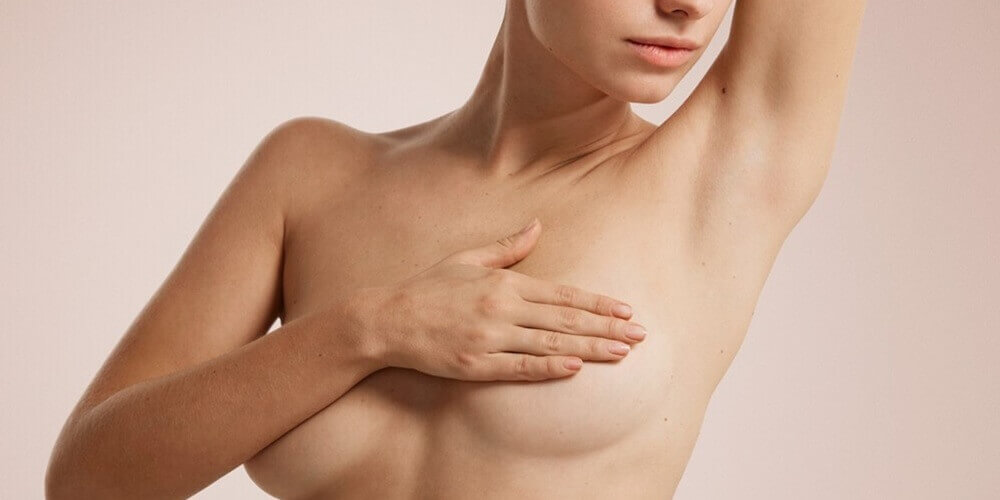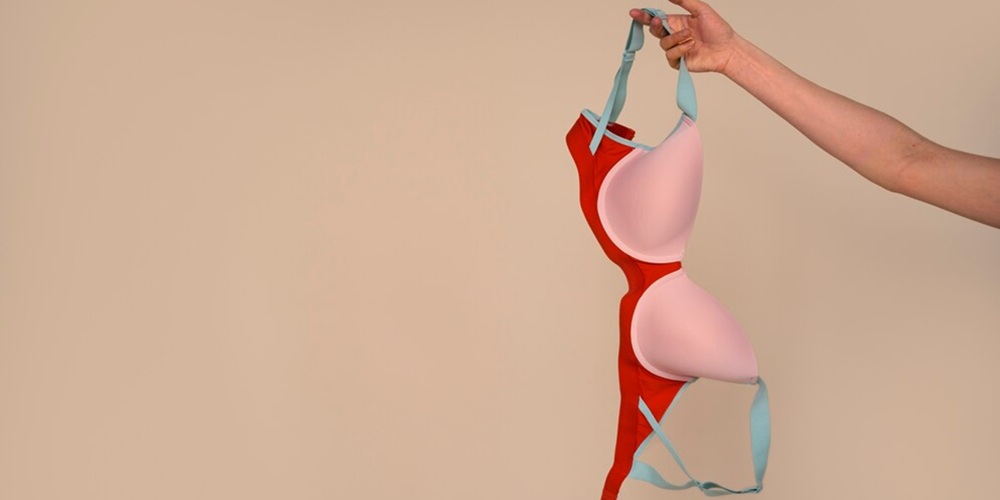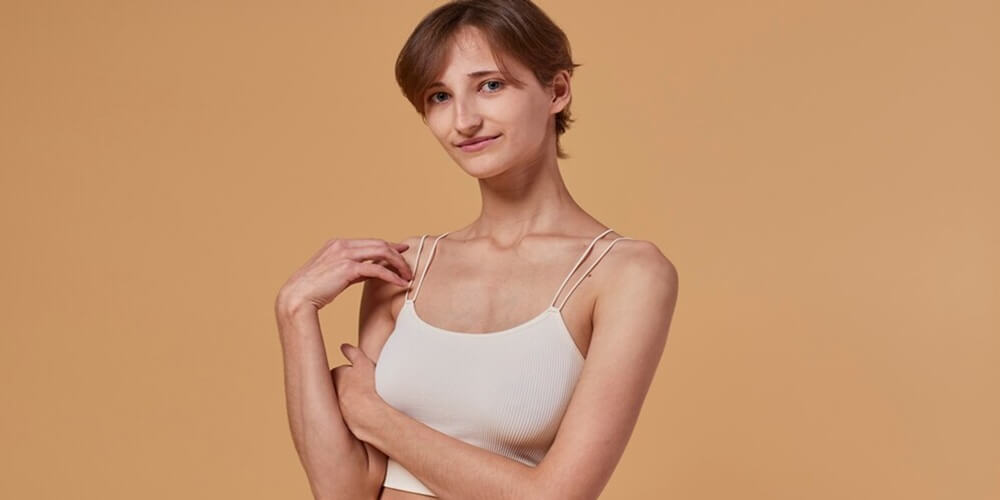Home » Breast Aesthetic Trends in 2025: What’s Popular?

The popularity of breast aesthetic trends and medical procedures has continued to increase globally. In the past two years, online interactions and the popularity of beauty-related content have further surged in the wake of the stay-at-home orders experienced during the pandemic. The global cosmetic trends market size was valued at 45.49 billion U.S. dollars and is projected to reach 53.33 billion U.S. dollars by 2028. The number of aesthetic medical procedures rose significantly in the past year, proving that the increasing preoccupation with looks during lockdown has contributed to the increase in cosmetic trends. With this overwhelming interest in the field of aesthetic plastic surgery and medical procedures, it follows that the average patient looking to undergo these popular breast procedures would be inundated with information, trends, and opinions online, ranging from possibilities and alternatives to the procedures to undergo. In this context, the current research on plastic surgery trends pertaining to 2025 breast surgery identifies new and upcoming breast aesthetic trends that emphasize technical innovation. This further explores perforator flaps and hybrid augmentation mastopexies that rely on this technology as future 2025 breast surgery trends. The shift toward technology-driven trends primarily indicates the rising preference for approaches that afford minimal invasiveness due to rapid recovery and reduced scarring following procedures.
The current landscape of media in the past decade, particularly within the context of social media, suggests that beauty trends are increasingly being shaped by digital trends, driven by social media algorithms favoring specific forms of beauty and celebrity. Such a fascination, especially among young adults, is largely attributed to the large, pouty-lipped and contoured figures of the celebrity influencers, which have been constantly underlined by the use and re-use of tags. Driven by a picture-based and visually evolving set of technologies, it seems that part of society’s perception and standard of attraction criteria are also shifting to reflect the mass market. The meaning of beauty, therefore, has tipped away from fashion trends to a cultural phenomenon, prompting many consumers to start considering elective or outpatient procedures as part of their yearly bucket list of resolutions. Moreover, it is estimated that the largely anticipated influx of two billion consumers utilizing smartphone and mobile platforms for purchases is likely to rise to 3.5 billion in the immediate future. This raises an ethical conundrum regarding the post-results of ‘marketing facial beauty,’ thus leading to the question of whether these aesthetic trends are influenced by culture, society, and choice or by consumer demand created by commercial interests.

The overall landscape for 2025 breast surgery is diverse and covers a range of techniques and activities. The most popular breast-based procedures involve implantation and are increasing in trend and practice. Breast augmentation was the most popular surgical procedure in the USA in 2020, followed by breast explantation and the subsequent replacement of breast implants. Breast reduction, another common surgical intervention, can remove up to 1 kg of breast tissue but does not involve necessary lifting popular breast procedures.
Around a quarter of patients who received breast augmentation or reduction procedures also underwent a breast lifting procedure. Not many patients undergo breast lift procedures alone. Additionally, patient demographics can inform appropriate treatment plans. For instance, younger patients may desire increased breast size while older patients may desire reductions in breast ptosis and volume. Patients from non-Caucasian backgrounds also have specific desires and surgical options that address their natural anatomical variances. Non-invasive procedures, including breast rejuvenation using radiofrequency, have also received attention as they are less invasive and provide more temporary results desirable to younger patients. A new handheld piece of radiofrequency technology is also being adopted for this purpose with successful results.
For interested women, many have concerns about body image and appearance. Improvements in surgical techniques and technology have played their role in advancing how successful breast augmentation and related popular breast procedures can be in improving patient satisfaction. However, the field does have some ethical controversy regarding promotional practices and providing patients with adequate information about the long-term complications and potential need for additional surgeries, such as implant replacement or explantation. Meanwhile, many women rely on healthcare professionals for consultations and decision-making. Alternatives include fat transfer from the patient’s buttocks to breasts, which is less invasive and more natural but is not as popular in mainstream culture given the need for a second liposuction procedure elsewhere on the body and a longer operative time.
Minimally invasive and non-surgical procedures have grown in popularity in recent years, with fat and thread lifts reaching the expanding level in 2022. Non-surgical breast augmentations are expected to continue to evolve. Breast toning and cooling devices are gaining popularity. Some fill and lift techniques use a variety of innovative materials. In the future, it may be possible to carry out body autophagy. An emerging breast management drug is being developed.
Use of autograft is expected to increase with the development of a more rational basis and techniques. A prototype ligand has a higher adipogenic ability, a higher take rate, and less resorption. Nutraceutical management aims to minimize bruising, swelling, and pain. High-level, individualized nipple correction will likely use a variety of aesthetic and surgical techniques, including botulinum toxin. Materials developed for body contouring have been shown to form multiple microvesicles in 7 days. This is expected due to the ease of de novo tissue construction. Adipose slice, neoangiogenesis stem cell reinforcement, and biodegradable skin graft filling devices can be found in the unbelievable section. Also, breast cup time studies will be conducted. Desired aesthetics, size, shape, bioenergetics, foods, and physical activity levels will provide for individual consultation for each age cohort. Ethical and sustainable goals will guide materials, especially considering the negative impact of certain materials on the environment. There is an evolving global collaborative platform committed to education, awareness, research, and making a difference in body positivity.
Forecasts for 2025 indicate that trends in 2025 breast surgery will include advances in minimally invasive techniques and materials, sometimes as part of non-surgical breast augmentation. There has been a decrease in personalized sizing and an increase in personalized breast aesthetic in Turkey such that a range of treatments best match one’s own body size, shape, and desire. There is also increased interest in industry and follow-up questions on ecological content to increase ethics. It is clear there is a connection between today and previous advancements. Various representatives were invited to provide data points and suggestions for 2025. Market data were considered and discussed to come to the final predictions.

Assessing Aesthetic Compatibility: Once a patient is satisfied with the knowledge, ability, and artistic talent a doctor can provide, it is now critical that the aesthetic vision and goal of what he or she will look like is in alignment or compatible with the aesthetic of the doctor. If the patient desires more perky, somewhat fuller breasts, and the doctor enjoys a more natural, teardrop-shaped breast, then the thought process of the two is not in сбrсnd. This is possibly the most vital way in which the involved patient should be able to express openly his or her desires for the procedure; the best plastic surgeon should professionally give an opinion, remain open-minded to the patient, and lead in a way that will possibly bring about the best permanent successful outcome.
Personal Comfort: Does this doctor fit the patient’s communication style and personality? Are visits pleasant? If a surgeon is unwilling to talk openly about topics or makes an individual feel inferior by speaking up about his or her concerns, dedicate to moving forward without the surgeon. A good surgery needs the top plastic surgeons and patients to have a personal and professional compatibility and comfort level. Hopefully, after informing the potential patient about the skills, experience, and safety commitment of the potential surgeon, it should now be easier to tell that the potential best plastic surgeon is indeed the right one. Every being in attendance should now feel supported, reassured and, at the end, have belief in the fact that the surgeon can produce incredible results. Choosing a plastic surgeon can be seen as the most vital option in starting a journey of aesthetic enhancement that can last a lifetime. With the advice included above, people close to mulling over the idea of pursuing a surgical change are bound to feel more secure in the potential best plastic surgeon who stands to perform the operation.

The convergence of medical and non-medical interventions and new market entries has disrupted and continues to disrupt our concept of beauty standards surrounding aesthetic breast intervention. The pursuit of beauty undoubtedly underpins recent expansion within the area, both in terms of market and technology. Ethics, safety, and the involvement of consumers in both appropriate age and platform in order to make informed decisions about all interventions, medical, non-medical, hydrosurgical, or surgical, is paramount.
Future directions include making the modern patient a greater focus: Patients increasingly want their popular breast procedures, aesthetic or otherwise, to be as individual as they are, seeking not only the procedure that is best for them, but also the delivery mechanism. Together with this will be a continued push for dual-purpose technology and non-surgical options by patients and professionals alike. Unfortunately, continued education in considerations of entitlement and psychology with respect to the body and its function is continually needed. Healthcare professionals, who may hold conflicting ethical and moral considerations in the field, typically have a higher psychological capability to decide about their individual actions. The same may not hold true for patients and consumers. Technological disruption will drive future trends, particularly around the areas of surgical de-escalation by design, technology, or chemodenervation, positioning of services alongside flu jabs and non-negotiable treatments, and dual-purpose technologies. Whether patients, society, or regulatory bodies will adapt to approve of these is a future that is yet to be realized.
As hard and soft technologies converge and move from being accessible only to the richest few to moving into the tills of mainstream retail, combined with an ever-rising acceptance of male beauty and the in-between, gender-wise, people will look to technologies and modern lifestyle equipment to offer them a multitude of diverse benefits. We can be sure that any technological advancements will come hand in hand with their own scope creep: breast implant and autologous fat graft plus chemistry-stimulated breast intervention, aiding treatment or prevention of breast cancer, normalizing breast shape and avoiding pathology, beginning to undertake ‘simple’ design docking and at-home fitting powered by AI, AR, and VR to streamline efficiencies between clinics, and designing, developing, and deploying technology such that body measurements are undertaken via a mobile device in the home or non-medical ‘wellness’ screen to simply insert best values into the pool for consideration by pharmacy aesthetic bio-distribution guidance. Any investment or research in these areas must fundamentally continue to involve and respect individual, social, legal, and regulatory input to ensure that such health and wellness or technology and social care services are deemed ethically acceptable and humane. In how we view these new life-enhancing services, we ‘will see as much as we look for.’ As we continue all of this work, we must continue to engage in ethical discussions in professional, public, and humanly kind forums.
Hello!